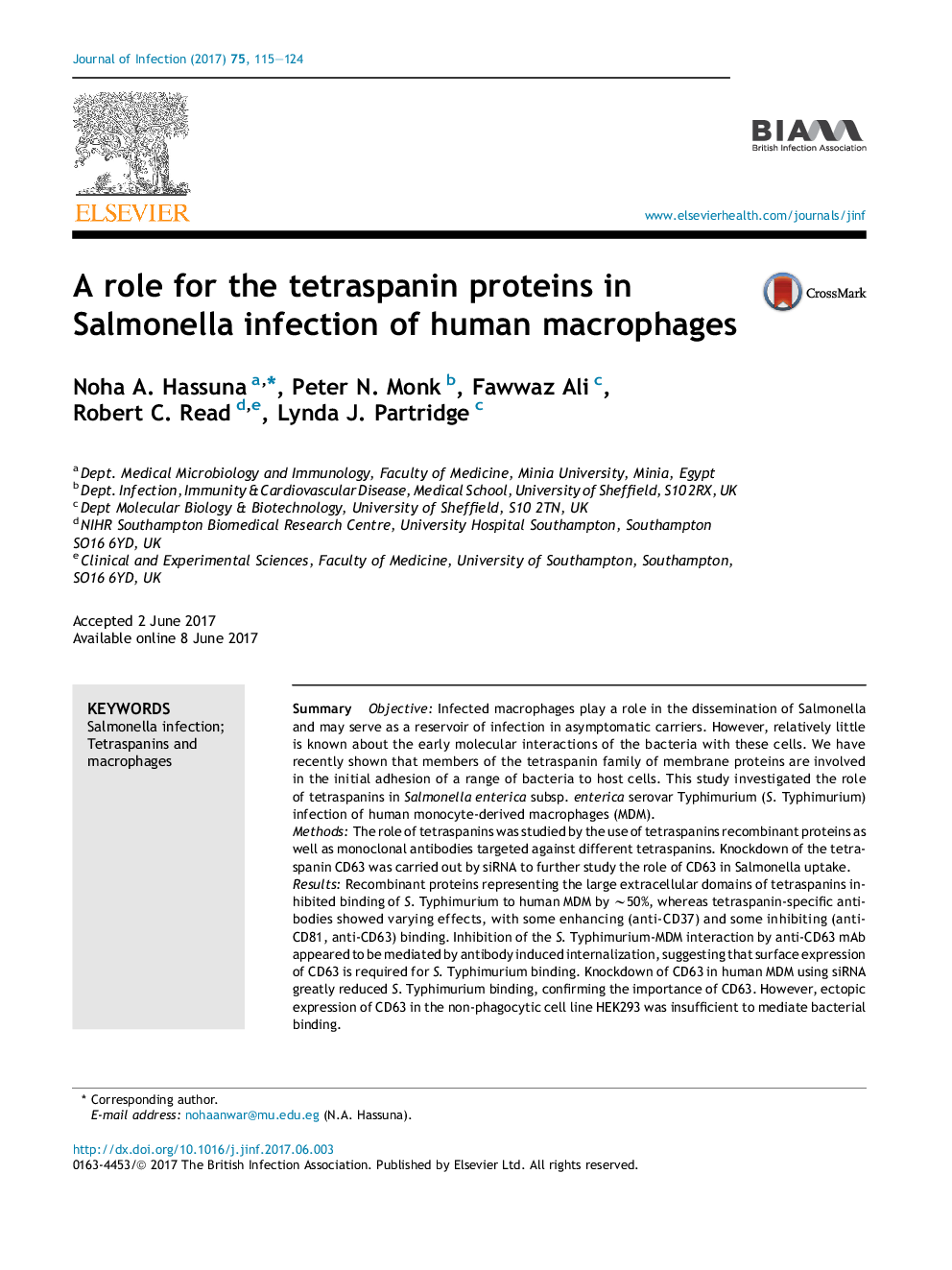| کد مقاله | کد نشریه | سال انتشار | مقاله انگلیسی | نسخه تمام متن |
|---|---|---|---|---|
| 5668560 | 1407906 | 2017 | 10 صفحه PDF | دانلود رایگان |

SummaryObjectiveInfected macrophages play a role in the dissemination of Salmonella and may serve as a reservoir of infection in asymptomatic carriers. However, relatively little is known about the early molecular interactions of the bacteria with these cells. We have recently shown that members of the tetraspanin family of membrane proteins are involved in the initial adhesion of a range of bacteria to host cells. This study investigated the role of tetraspanins in Salmonella enterica subsp. enterica serovar Typhimurium (S. Typhimurium) infection of human monocyte-derived macrophages (MDM).MethodsThe role of tetraspanins was studied by the use of tetraspanins recombinant proteins as well as monoclonal antibodies targeted against different tetraspanins. Knockdown of the tetraspanin CD63 was carried out by siRNA to further study the role of CD63 in Salmonella uptake.ResultsRecombinant proteins representing the large extracellular domains of tetraspanins inhibited binding of S. Typhimurium to human MDM by â¼50%, whereas tetraspanin-specific antibodies showed varying effects, with some enhancing (anti-CD37) and some inhibiting (anti-CD81, anti-CD63) binding. Inhibition of the S. Typhimurium-MDM interaction by anti-CD63 mAb appeared to be mediated by antibody induced internalization, suggesting that surface expression of CD63 is required for S. Typhimurium binding. Knockdown of CD63 in human MDM using siRNA greatly reduced S. Typhimurium binding, confirming the importance of CD63. However, ectopic expression of CD63 in the non-phagocytic cell line HEK293 was insufficient to mediate bacterial binding.ConclusionBacterial adhesion is the first step in infection by pathogens that invade and replicate within host cells. Taken together, the results here describe a role for tetraspanins in binding of S. Typhimurium to human macrophages and highlight the particular importance of CD63 in this process.
Journal: Journal of Infection - Volume 75, Issue 2, August 2017, Pages 115-124